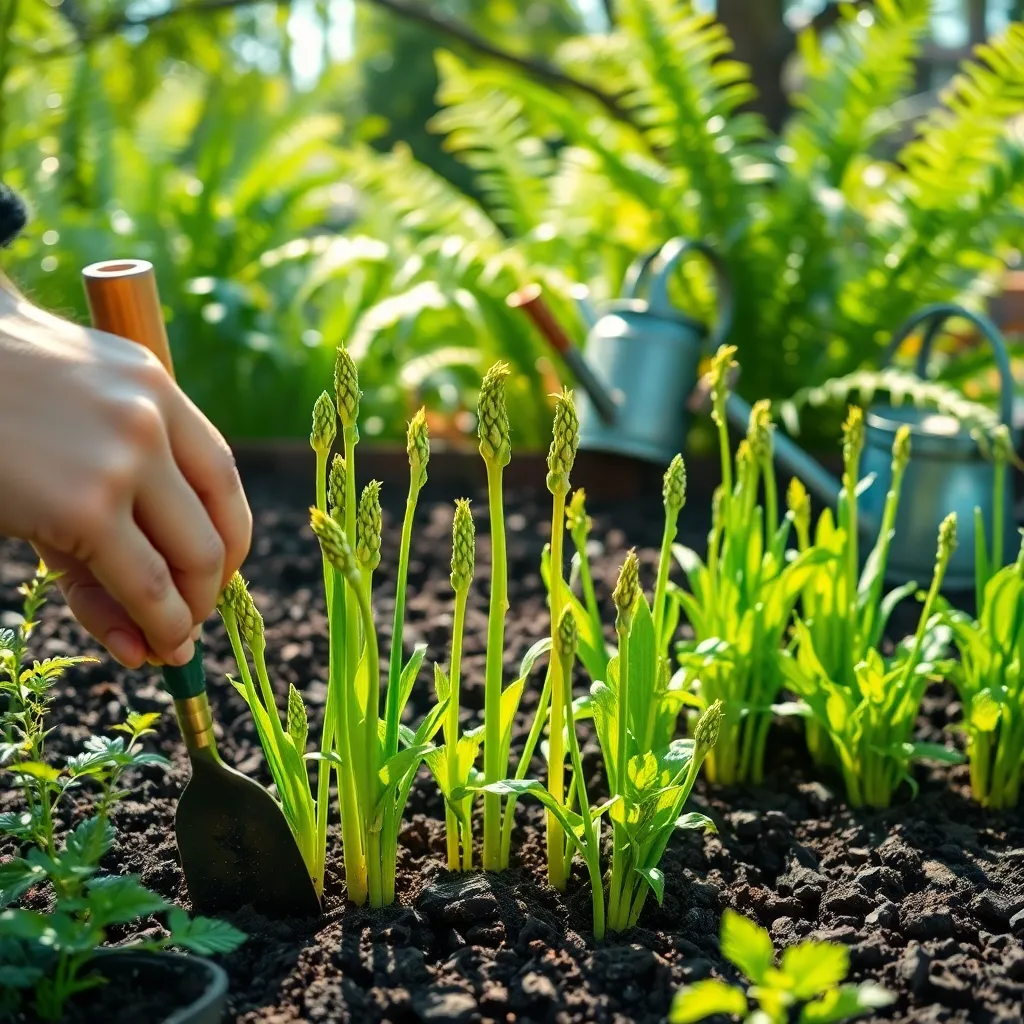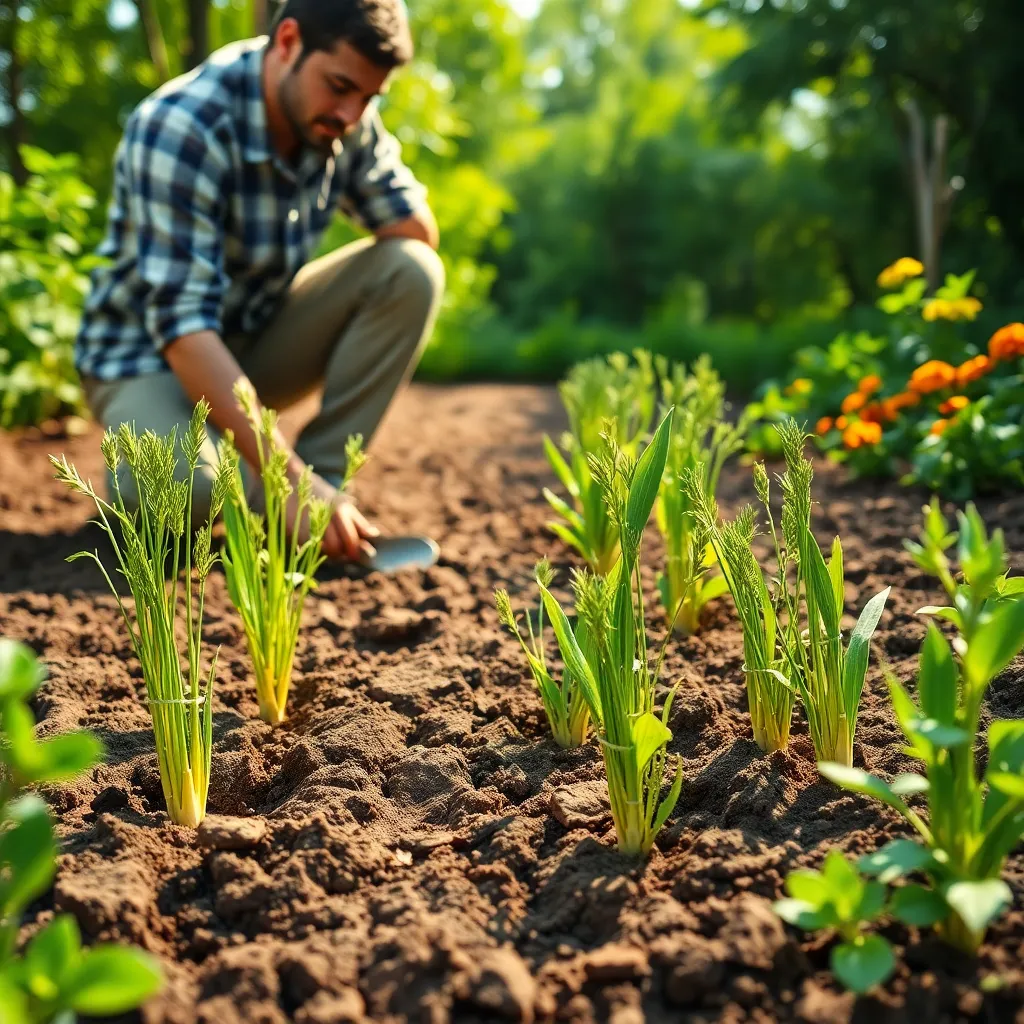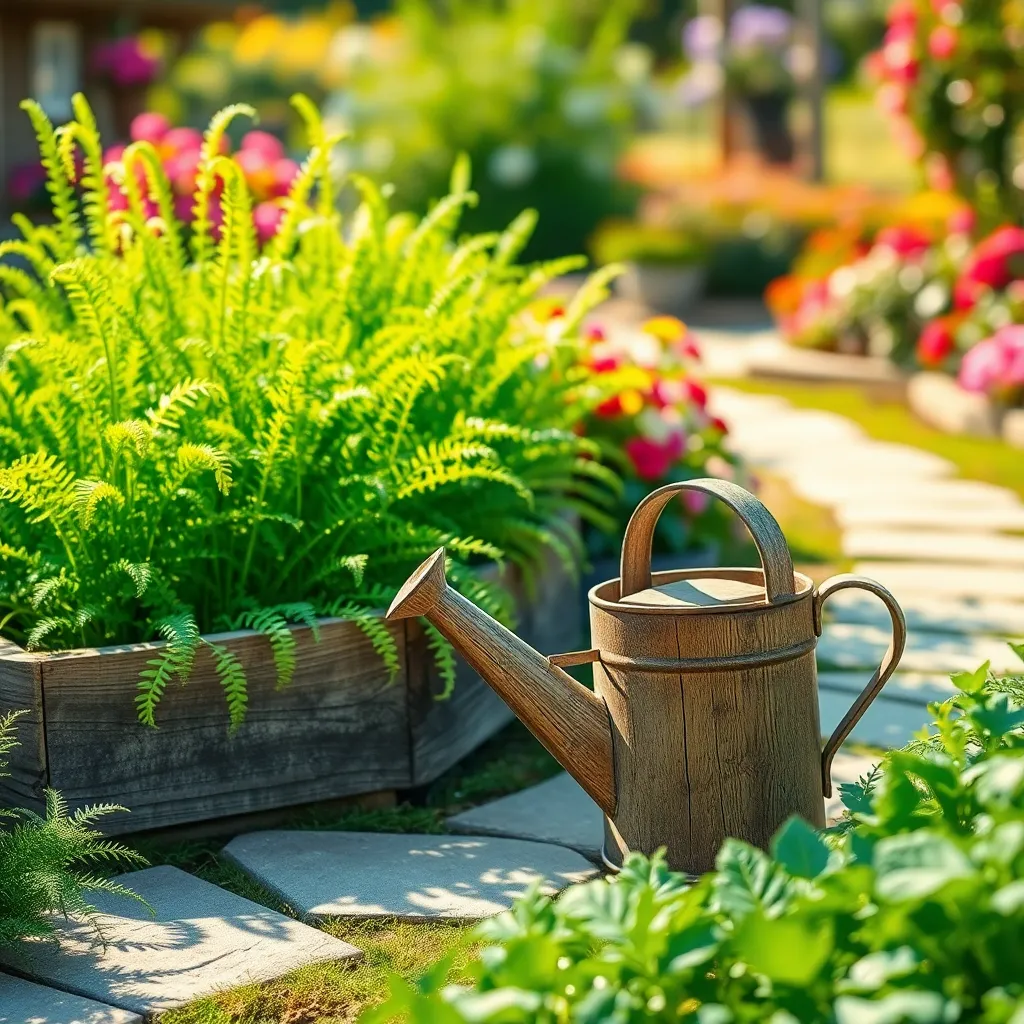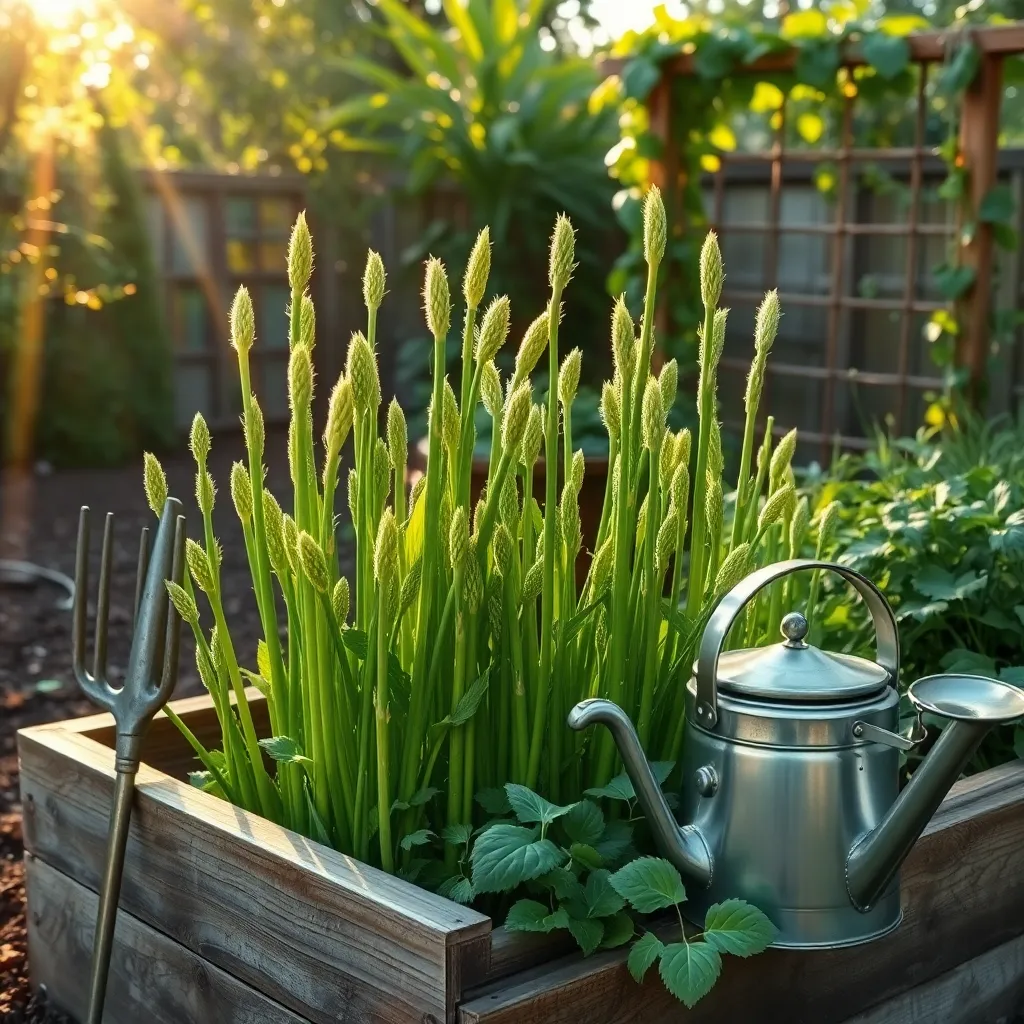Growing asparagus at home is like cultivating a little bit of culinary magic right in your backyard. This perennial vegetable, known for its tender spears and vibrant green color, can transform your garden into an oasis of fresh flavors, offering rewards that extend far beyond the kitchen table. Whether you’re embarking on your first gardening journey or are a seasoned green thumb, diving into the world of asparagus growing is both a delightful and rewarding endeavor that deepens your connection to the earth.
In this guide, we’ll explore the essentials of asparagus cultivation, from selecting the right variety and preparing your soil to mastering the art of patience as you wait for those first glorious shoots to appear. You’ll discover how to nurture your plants through the seasons, ensuring they thrive and produce bountiful harvests for years to come. With our step-by-step approach, you’ll gain the confidence to tackle the unique challenges of asparagus gardening, transforming what might seem like a daunting task into a joyful and accessible experience.
By the end of this article, you’ll feel equipped to grow your own asparagus, armed with practical tips and expert insights that cater to both beginners and seasoned gardeners alike. As you embark on this journey, you’ll not only enhance your gardening prowess but also enrich your dining experiences with the freshest asparagus imaginable. Let’s dig in and uncover the secrets to growing this gourmet delight right at home, ensuring your garden becomes a testament to both your passion and skill.
Select Ideal Asparagus Varieties

Choosing the right asparagus variety for your garden can greatly influence the success of your crop. Start by considering the climate in your region, as some varieties are better suited to colder climates while others thrive in warmer areas.
Mary Washington is a classic variety known for its reliability and adaptability. It performs well in a range of climates and is ideal for gardeners who are new to growing asparagus.
For those looking to maximize yield, consider planting Jersey Knight. This variety is especially resistant to common asparagus diseases and is known for producing large, tender spears.
Advanced gardeners may want to try Purple Passion, which offers a unique color and a slightly sweeter taste. Keep in mind that it requires the same care as green asparagus but with the added benefit of being a standout feature in your vegetable garden.
Regardless of the variety you choose, ensure that your asparagus bed is prepared with well-draining soil enriched with organic matter. Regular watering is essential, especially during dry spells, to ensure healthy growth and a bountiful harvest.
For best results, plant asparagus in a sunny location where it can grow undisturbed for several years. Remember that patience is key, as asparagus typically takes a few seasons to fully establish and produce a significant harvest.
Prepare Well-Drained Planting Site

Before planting asparagus, it is crucial to ensure that your garden site is well-drained, as these plants thrive in such conditions. To achieve this, start by selecting a site that receives full sun and has a slight slope to facilitate drainage.
Amend your soil by incorporating organic matter like compost or well-rotted manure, which will improve drainage and soil fertility. Aim for a soil pH between 6.5 and 7.5, as asparagus prefers slightly acidic to neutral conditions.
For gardeners with heavy clay soils, consider creating raised beds to enhance drainage. Elevated planting areas can prevent waterlogging, which can lead to root rot in asparagus plants.
After preparing the soil, allow it to settle for a few days before planting. This step ensures that the amended soil structure is stable and ready to support the growth of your asparagus crowns.
Plant Crowns in Early Spring

As soon as the soil is workable in early spring, it’s time to plant your asparagus crowns. Choose crowns that are one-year-old for the best balance of vigor and adaptability, ensuring a healthy start to your asparagus bed.
Dig trenches about 12 inches wide and 6 inches deep, spacing them 18 inches apart. Place each crown in the trench about 12 to 18 inches apart, fanning out the roots and covering them with 2 inches of soil.
Gradually fill the trench with soil as the plants grow, ensuring that the growing tips always remain slightly covered. This gradual covering process encourages the development of strong, deep roots, which is crucial for a healthy asparagus crop.
Ensure the growing site receives full sun, which will promote vigorous growth. Asparagus thrives in soil with a pH of 6.5 to 7.5, so a soil test can help you adjust the pH if necessary for optimal plant health.
Maintain Consistent Watering Schedule

Maintaining a consistent watering schedule is crucial for the successful growth of asparagus. Asparagus plants require adequate moisture, especially in their early stages, to establish a strong root system and produce healthy spears.
Water the asparagus beds deeply once a week, ensuring the soil is moist but not waterlogged. It’s important to adjust this frequency during hot and dry spells, increasing watering to twice a week if the top inch of soil feels dry.
Using a soaker hose or drip irrigation system can help deliver water directly to the root zone, minimizing evaporation and ensuring even distribution. Watering in the early morning allows time for the foliage to dry, reducing the risk of fungal diseases.
For established asparagus plants, maintaining consistent moisture during the growing season supports optimal spear production. Mulching with organic material like straw or shredded leaves can help retain soil moisture and suppress weeds, enhancing the overall growing environment for your asparagus.
Harvest Spears in Third Year

In the third year of growing asparagus, it’s finally time to begin harvesting those long-awaited spears. Patience is key in these initial years, as a strong root system ensures a plentiful harvest for many seasons to come.
During this first harvest year, limit your picking to a window of about two to three weeks. This allows the plants to continue building strength, ensuring a more robust yield in subsequent years.
Harvest spears when they reach about 6 to 8 inches in height, cutting them just below the soil surface with a sharp knife. Be mindful to avoid damaging emerging spears or the crown, which can affect future growth.
After the initial short harvest period, allow the remaining spears to grow into ferns. These ferns will feed the roots and support the plant’s health, setting the stage for a bountiful harvest in the coming years.
Conclusion: Growing Success with These Plants
As you embark on the delightful journey of growing asparagus at home, remember that nurturing your garden mirrors nurturing your relationships. First, just as asparagus requires patience, relationships thrive when given time to grow and develop. Second, establishing strong roots in your soil is akin to building a foundation of trust and communication. Third, providing consistent care, like watering and feeding, parallels the regular attention and affection needed in relationships. Fourth, pruning and maintenance reflect the importance of addressing issues promptly to foster healthy bonds. Lastly, celebrating the harvest is much like cherishing the milestones and joys shared with loved ones.
To take immediate action, why not start by planting the seeds of open communication with someone close today? As you do, bookmark this article to remind you of these valuable insights when tending to both your garden and your relationships. By doing so, you’re setting the stage for lasting success and growth in all aspects of life. Remember, the seeds of love and connection you plant today can lead to a future filled with abundant relationships. Save this guide as a cherished resource for your journey ahead.
